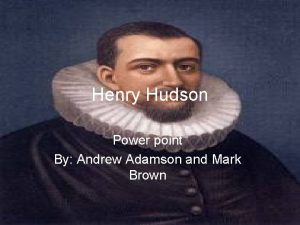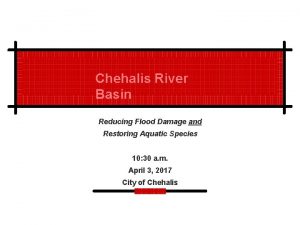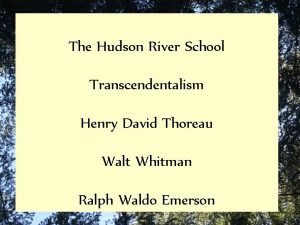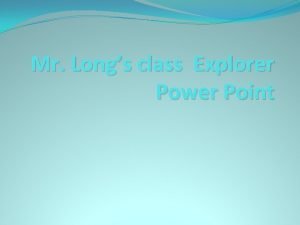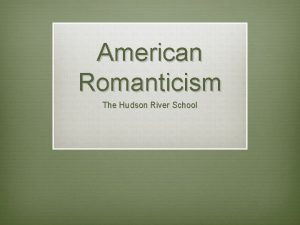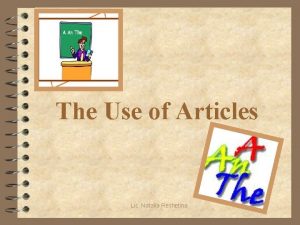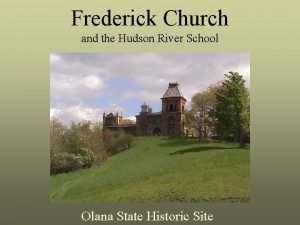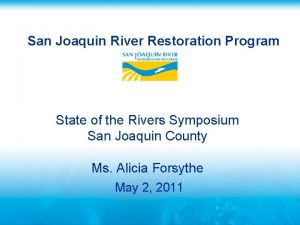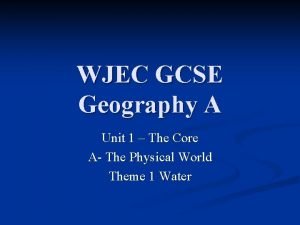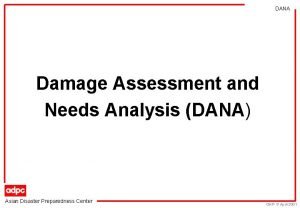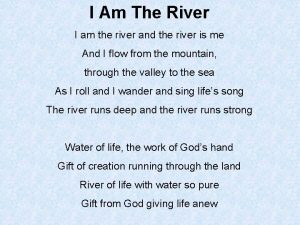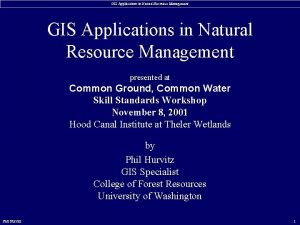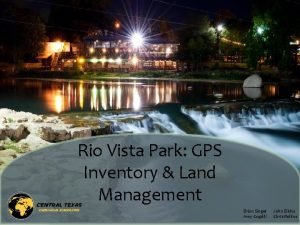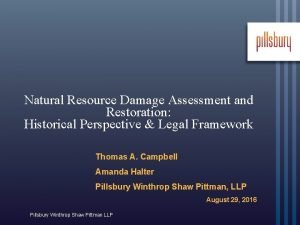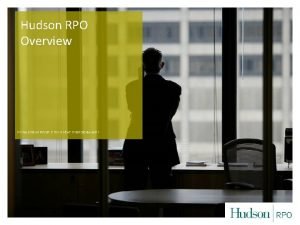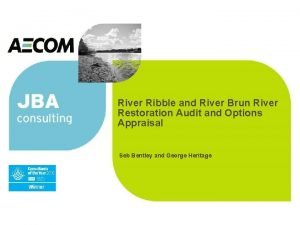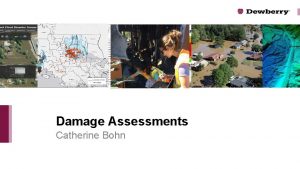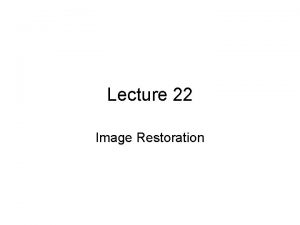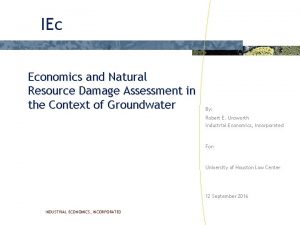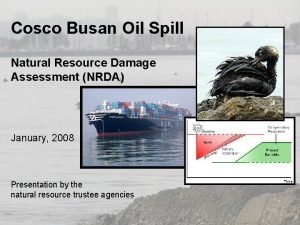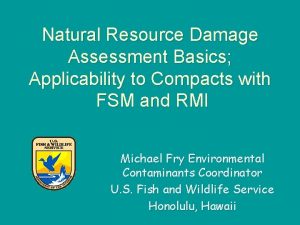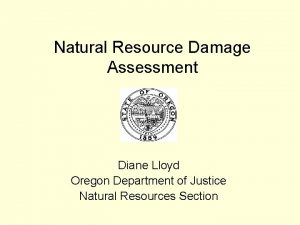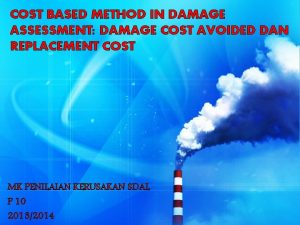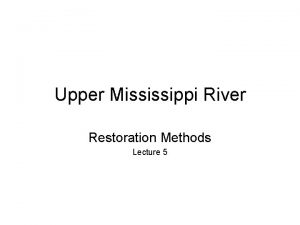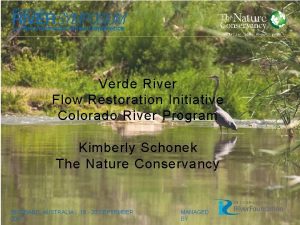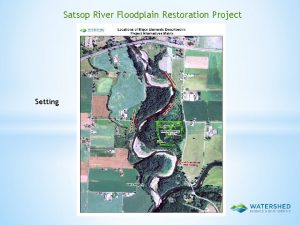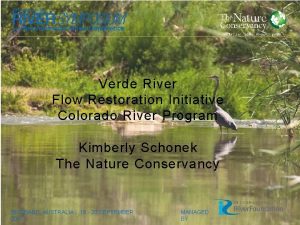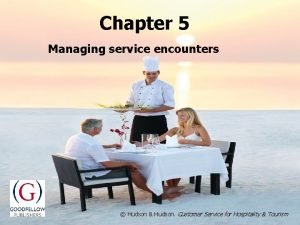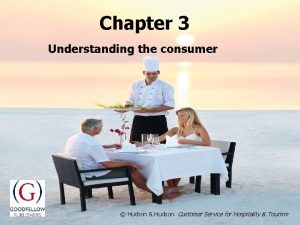Hudson River Natural Resource Damage Assessment and Restoration


















- Slides: 18

Hudson River Natural Resource Damage Assessment and Restoration Margaret Byrne, U. S. Fish and Wildlife Service

Introduction The Hudson River Natural Resource Trustees are conducting a natural resource damage assessment (NRDA) to determine the type and amount of restoration needed to compensate the public for injuries to their natural resources from GE's PCBs. This presentation provides an overview and status of the Hudson River NRDA.

Cleanup and Restoration • EPA: Superfund – clean up hazardous substances to protect the environment and public health. • Trustees: Natural Resource Damage Assessment – assess, and restore or replace natural resources injured by hazardous substances to provide for the public’s use and enjoyment.

Hudson River PCB Pollution

Hudson River Natural Resource Trustees New York State, represented by the Department of Environmental Conservation (NYSDEC) U. S. Department of the Interior (DOI), represented by the U. S. Fish and Wildlife Service (USFWS) U. S. Department of Commerce, represented by the National Oceanic and Atmospheric Administration (NOAA)

Role of the Trustees • Trustees are stewards of the public’s natural resources. These agencies have resource management authority. • Trustees pursue damage claims for past, present, or future injury to natural resources. • Trustees resolve damage claims through settlement or litigation. • Trustees implement restoration.

Trustee’s Steps 1. Assess the injuries. 2. Identify and scale appropriate restoration alternatives. 3. Resolve the claim. 4. Develop a restoration plan. 5. Implement restoration activities. 6. Monitor the effectiveness of restoration activities. Photo Credit Brady Dillsworth

Assessment Trustees conduct scientific studies to identify the nature and extent of the harm PCBs cause in and along the river. For each resource and service, we are: 1. determining the nature and extent of the injury; 2. quantifying the magnitude of the injury; and 3. determining if and when remedial actions will restore injured natural resources to baseline conditions.

Assessment: Injury Categories Under Investigation • Violations of State or Federal standards - Fish (fish consumption advisories) - Waterfowl - Surface Water - Ground Water • Biological resource injuries - Mammals, Birds, Fish • Navigational Service Loss • Remedy-caused injuries - (e. g. , Mussels, Aquatic vegetation) • Pathway injuries

Assessment: Injury Determination Reports • Hudson River Fishery Resources: Fishery Closures and Consumption Restrictions (June 2001; April 2015) • Hudson River Surface Water Resources (Navigation - July 2006; December 2008) • Hudson River Resident Waterfowl (August 2013) • Hudson River Groundwater (September 2015)

Steps in Restoration Planning 1. 2. 3. 4. 5. 6. 7. Identify categories for types of projects. Develop restoration ideas. Solicit additional ideas from the public. Scale restoration. (Determine the type and amount of restoration needed to offset injuries and lost services. ) Review and select preferred projects. Develop a Draft Hudson River Restoration Plan and submit for public comment Finalize and implement the Restoration Plan.

Project Selection Criteria Guidance for restoration project selection includes: • • Link to injury Legality Efficacy Feasibility Cost-effectiveness Ecological leverage Nexus to existing plans

Examples of Restoration Project Alternatives under Consideration Project alternatives include but are not limited to: Dam removal and fish passage Wetland restoration Floodplain protection Creation of grasslands Human use projects (such as access points for recreation) Ground water protection Restoration of freshwater mussels Restoration dredging of Upper Hudson PCB-contaminated sediments • Navigational dredging • • •

Concerns about Unremediated PCBs • PCB hot spots will be only partially remediated in River Sections 2 and 3. • Remaining contamination will cause ongoing injuries to natural resources and slow the economic and ecological recovery of the river. • Navigational channels will remain contaminated • Highly contaminated areas will remain adjacent to dredged areas post-remedy. Recontamination is likely.

Unremediated PCBs Potential Impacts on Restoration • The magnitude of contamination remaining post - dredging may limit the type and amount of restoration options in the Upper Hudson. • Restoration projects may need to be located further from the site of greatest contamination. • Trustees would need to consider harm from creating an “attractive nuisance” in PCBcontaminated areas.

Trustee’s Next Steps • Completing injury assessment • Evaluating restoration alternatives and developing restoration planning documents • Building relationships with stakeholders • Resolving the claim • Implementing restoration to accelerate economic and ecological recovery of the Hudson River

Learn More • Visit Trustee websites NOAA – https: //darrp. noaa. gov/hazardous-waste/hudson-river NYSDEC – www. dec. ny. gov/lands/25609. html FWS – www. fws. gov/contaminants/restorationplans/ Hudson. River/index. html • Join our Listserve Send a blank email to Hudson-nrda-join@list. woc. noaa. gov • Contact us Margaret Byrne -- (413) 253 -8593 -- Margaret_Byrne@fws. gov Kathryn Jahn -- (413) 427 -3851 -- Kathryn_Jahn@fws. gov Tom Brosnan -- (301) 713 -3038 x 186 -- Tom. Brosnan@noaa. gov

Hudson River PCBs Superfund Site Hudson Falls/Ft Edward GE Plant Sites UHR LHR Federal Dam Former Ft Edward Dam River Section 1 EPA Remedy River Section 2 ~ 150 miles River Section 3 Federal Dam The Battery/NYC 18
 Henry hudson lifespan
Henry hudson lifespan Flood damage restoration the basin
Flood damage restoration the basin Transcendentalism hudson river school
Transcendentalism hudson river school Skunks
Skunks Notch of the white mountains
Notch of the white mountains My garden's looking lovely now that daffodils are in flower
My garden's looking lovely now that daffodils are in flower Hudson river school
Hudson river school Hudson river foundation
Hudson river foundation Hudson river
Hudson river How did the hudson river school increase westward expansion
How did the hudson river school increase westward expansion San joaquin river restoration program
San joaquin river restoration program Channelisation geography
Channelisation geography Damage assessment and needs analysis
Damage assessment and needs analysis I am the river and the river is me
I am the river and the river is me Resource leveling is the approach to even out the peaks of
Resource leveling is the approach to even out the peaks of Contoh resource loading
Contoh resource loading Green river (duwamish river tributary)
Green river (duwamish river tributary) Gis hrm
Gis hrm Classes in rio vista natural resource park
Classes in rio vista natural resource park
